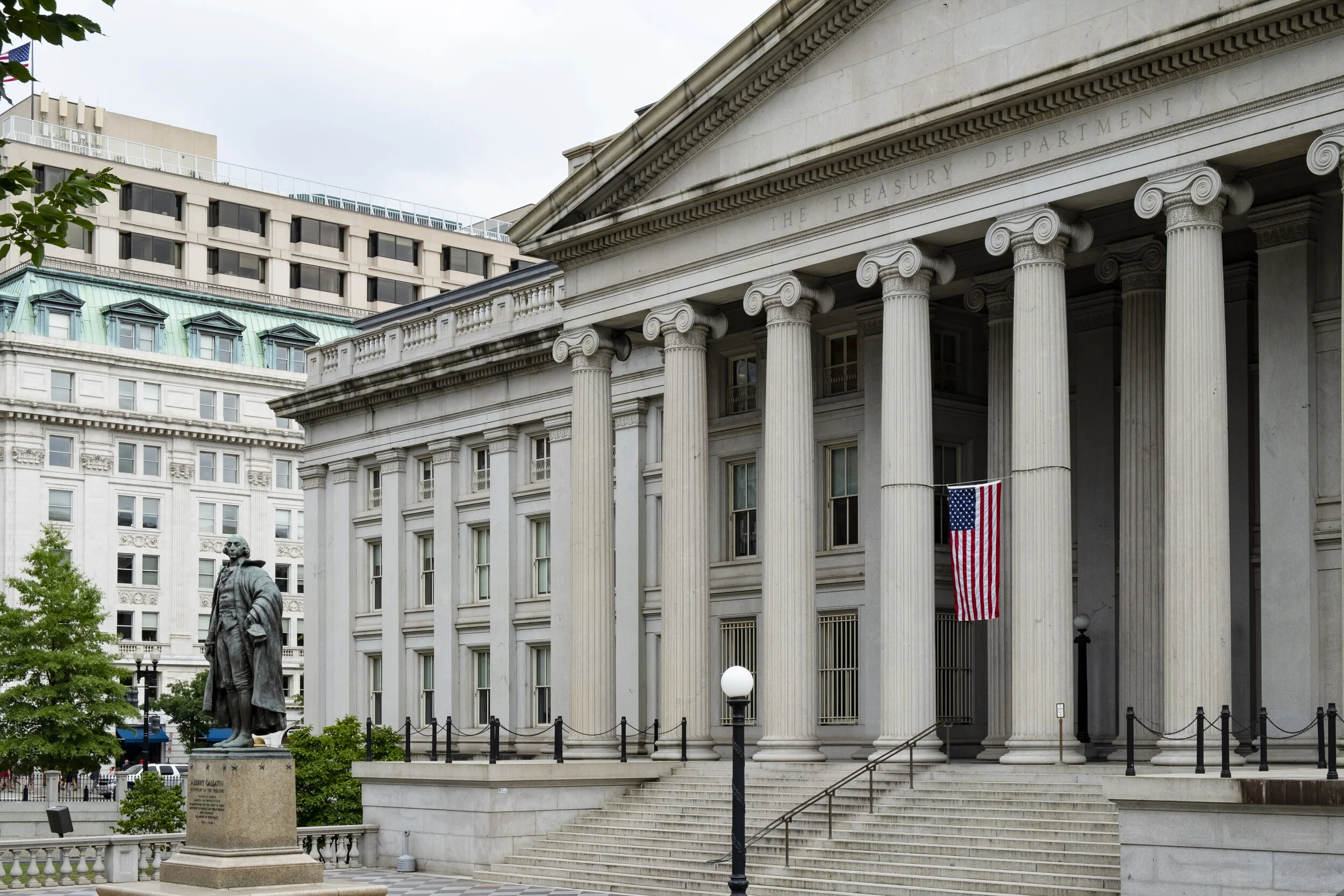Drafting a budget from the August 2021 Senate reconciliation framework that satisfies the Senate rules of reconciliation (“Byrd Rule”) will require a decrease in new outlays or a large increase in revenues (or both) after the standard 10-year budget window.
One such potential reduction in spending would allow the new non-healthcare related discretionary spending provisions to expire after 2031.
With this reduced spending in 2031, we project that the reconciliation package will decrease GDP by 4.0 percent in 2050. Without this spending decrease (and where the Byrd Rule is not satisfied), we project a 4.8 percent fall in GDP in 2050.
Macroeconomic and Distributional Effects of the Scheduled October 2021 Expansion of the Supplemental Nutrition Assistance Program (SNAP)
The USDA re-evaluation of the Thrifty Food Plan increases the average SNAP benefit by $36.24 per person per month starting in October 2021. PWBM projects that the increase in SNAP spending lowers GDP by 0.2 percent by 2031. People who receive SNAP as well as older working age individuals are helped by policy change while young people with high incomes as well as rich retirees are harmed due to lower future wages and a fall in the return to capital.
Economic Effects from Preschool and Childcare Programs
By 2051, we find that a combination of targeted preschool and targeted childcare programs increase GDP by 0.1 percent relative to current policy, even if deficit financed. Universal versions of these programs are more costly and would instead reduce GDP by 0.2 percent by 2051.
Budgetary Offsets for Democrats’ Reconciliation Package: Options
We analyze a combination of net revenue raisers consistent with the requirements released by the Senate Budget Committee on August 9th, 2021, for budget reconciliation.
Who Attends Community College?
About 30 percent of students who first attend two-year community college are from families with incomes above the median income for students attending four-year colleges. Moreover, upwards of one-fifth of top students from relatively small and large high schools first attend a two-year institution.
Updated Bipartisan Senate Infrastructure Deal: Budgetary and Economic Effects
The bipartisan Senate infrastructure deal, endorsed by President Biden, authorizes about $548 billion in additional infrastructure investments, which we estimate is funded by $132 billion in new tax provisions and $351 billion in new deficits. We project that proposal would have no significant effect on GDP by end of the budget window (2031) or in the long run (2050).
Profit Shifting and the Global Minimum Tax
We estimate that the recent OECD proposal for a global minimum tax would triple the effective U.S. tax rate on foreign income from 2 percentage points to 5.8 percentage points. The Biden administration’s proposed changes to the U.S. global minimum tax regime would instead raise the effective U.S. tax rate on foreign income to 12.4 percentage points.
Inheritances by Age and Income Group
Households in the top 5 percent of the income distribution receive inheritances between 4 to 12 times larger than households in the bottom 80 percent, depending on the exact definition of inheritance used.
Projections of Global Intangible Low-Taxed Income: A Validation Exercise
Under current law, PWBM projects that U.S. multinationals will report a cumulative $3.6 trillion in Global Intangible Low-Taxed Income (GILTI) between 2022 and 2031. Data released in July 2021 by the Internal Revenue Service for the 2018 tax year provides the first opportunity for a more extensive validation of PWBM’s model of U.S. multinationals’ tax returns. PWBM projects 2018 GILTI within 5.3 percent of the IRS value, suggesting a very good model fit.
President Biden’s FY2022 Budget Proposal: Budgetary and Economic Effects
PWBM estimates that President Biden’s FY2022 budget proposal would increase spending by $6.1 trillion and increase revenue by $3.9 trillion over the 2022-2031 budget window. By 2050, we project that the President’s budget proposals would decrease public debt by 5.1 percent and decrease GDP by 1.5 percent relative to current law.
Effects of President Biden’s Unauthorized Immigrant Legalization Proposal on SNAP and Payroll Tax
PWBM projects that the legalization provisions of the U.S. Citizenship Act proposed by President Biden would increase per capita spending on the Supplemental Nutrition Assistance Program (SNAP) by 1.2 percent in 2030 and 0.8 percent 2050 relative to the current policy baseline. Per capita payroll taxes would decrease by 0.1 percent relative to the current policy baseline.
Bipartisan Senate Infrastructure Deal: Budgetary and Economic Effects
The bipartisan Senate infrastructure deal, endorsed by President Biden, authorizes $1.2 trillion of spending, representing about $579 billion in additional infrastructure investments funded by a mix of deficits, user fees, and other tax provisions. This proposal would increase output in 2050 by 0.1 percent.
Interactive Tool: Options to Reduce the National Debt
This interactive page presents estimated budgetary, economic, and distributional effects for a wide array of policies and policy packages that would reduce the federal debt.
Explainer: Capital Crowd Out Effects of Government Debt
Government spending redirects real resources in the economy and can crowd out private capital formation. An additional $1 trillion debt this year could decrease GDP by as much as 0.28 percent in 2050.
Republican and Bipartisan Infrastructure Proposals: Budget and Economic Effects
We estimate that Sen. Capito’s $330 billion infrastructure package, funded by user fees over 8 years, would increase GDP by about 0.05 percent in 2050. A $579 billion infrastructure investment being considered by a bipartisan group of senators, would increase output in 2050 by 0.1 percent if funded by user fees or have roughly zero net effect on GDP if deficit financed.
Explainer: Economic Effects of Infrastructure Investment
Public infrastructure investment boosts the productivity of private capital and labor, leading to higher output, but this positive effect can be offset if the investment is financed with additional government borrowing. PWBM estimates that an illustrative 10-year, $2 trillion public investment plan will raise public capital by 4.6 percent but lower private capital by 0.8 percent in 2040, with a net zero effect on GDP in 2040.
COVID-19 School Closures: Long-run Macroeconomic effects
PWBM estimates that the learning loss from school closures reduced GDP by 3.6 percent in 2050. Extending the 2021-22 school year by one month would cost about $75 billion nationally but would limit the reduction in GDP to 3.1 percent. This smaller reduction in GDP produces a net present value gain of $1.2 trillion over the next three decades, equal to about a $16 return for each $1 invested in extending the 2021-22 school year.
President Biden's American Families Plan: Budgetary and Macroeconomic effects
PWBM projects that the American Families Plan (AFP) would spend $2.5 trillion, about $700 billion more than the White House’s estimate, over the 10-year budget window, 2022-2031. We estimate that AFP would raise 1.3 trillion in new tax revenue over the same period. By 2050, the AFP would increase government debt by almost 5 percent and decrease GDP by 0.4 percent.
Map: Income Underreporting by State
We estimate a state-level decomposition of income underreporting in the US to be over $1.3 trillion for tax year 2018. We present these numbers separately by income type (wages and salaries, partnerships and S-corps, capital gains and dividends, interest, schedule C, and other). Most (69 percent) of underreported income is underreported Schedule C (sole proprietorship) income.
Revenue Effects of President Biden’s Capital Gains Tax Increase
PWBM estimates that raising the top statutory rate on capital gains to 39.6 percent would decrease revenue by $33 billion over fiscal years 2022-2031. If stepped-up basis were eliminated—as proposed in President Biden’s campaign plan—then raising the top rate to 39.6 percent would instead raise $113 billion over 2022-2031.











